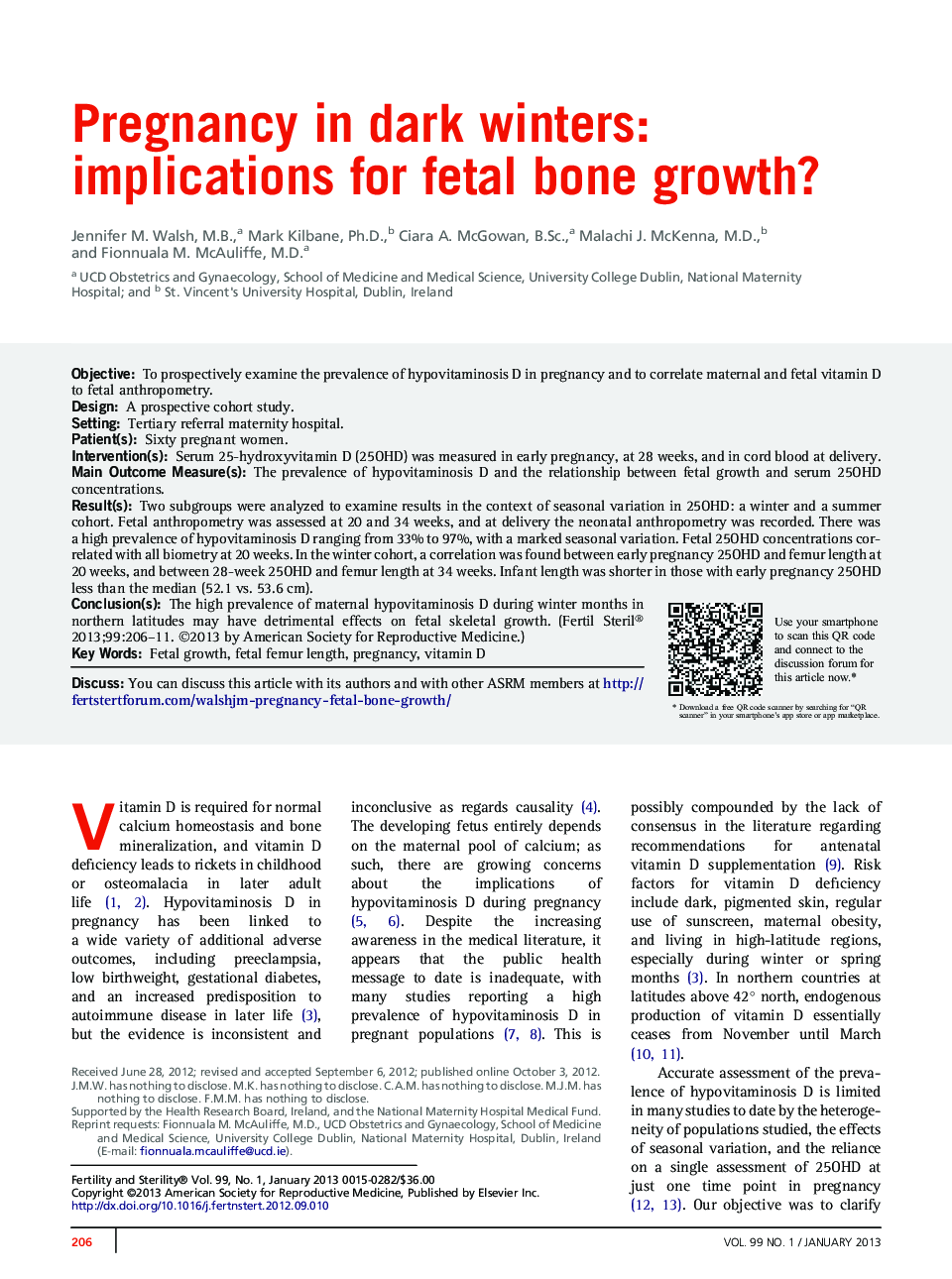| Article ID | Journal | Published Year | Pages | File Type |
|---|---|---|---|---|
| 6179264 | Fertility and Sterility | 2013 | 6 Pages |
ObjectiveTo prospectively examine the prevalence of hypovitaminosis D in pregnancy and to correlate maternal and fetal vitamin D to fetal anthropometry.DesignA prospective cohort study.SettingTertiary referral maternity hospital.Patient(s)Sixty pregnant women.Intervention(s)Serum 25-hydroxyvitamin D (25OHD) was measured in early pregnancy, at 28 weeks, and in cord blood at delivery.Main Outcome Measure(s)The prevalence of hypovitaminosis D and the relationship between fetal growth and serum 25OHD concentrations.Result(s)Two subgroups were analyzed to examine results in the context of seasonal variation in 25OHD: a winter and a summer cohort. Fetal anthropometry was assessed at 20 and 34 weeks, and at delivery the neonatal anthropometry was recorded. There was a high prevalence of hypovitaminosis D ranging from 33% to 97%, with a marked seasonal variation. Fetal 25OHD concentrations correlated with all biometry at 20 weeks. In the winter cohort, a correlation was found between early pregnancy 25OHD and femur length at 20 weeks, and between 28-week 25OHD and femur length at 34 weeks. Infant length was shorter in those with early pregnancy 25OHD less than the median (52.1 vs. 53.6 cm).Conclusion(s)The high prevalence of maternal hypovitaminosis D during winter months in northern latitudes may have detrimental effects on fetal skeletal growth.
